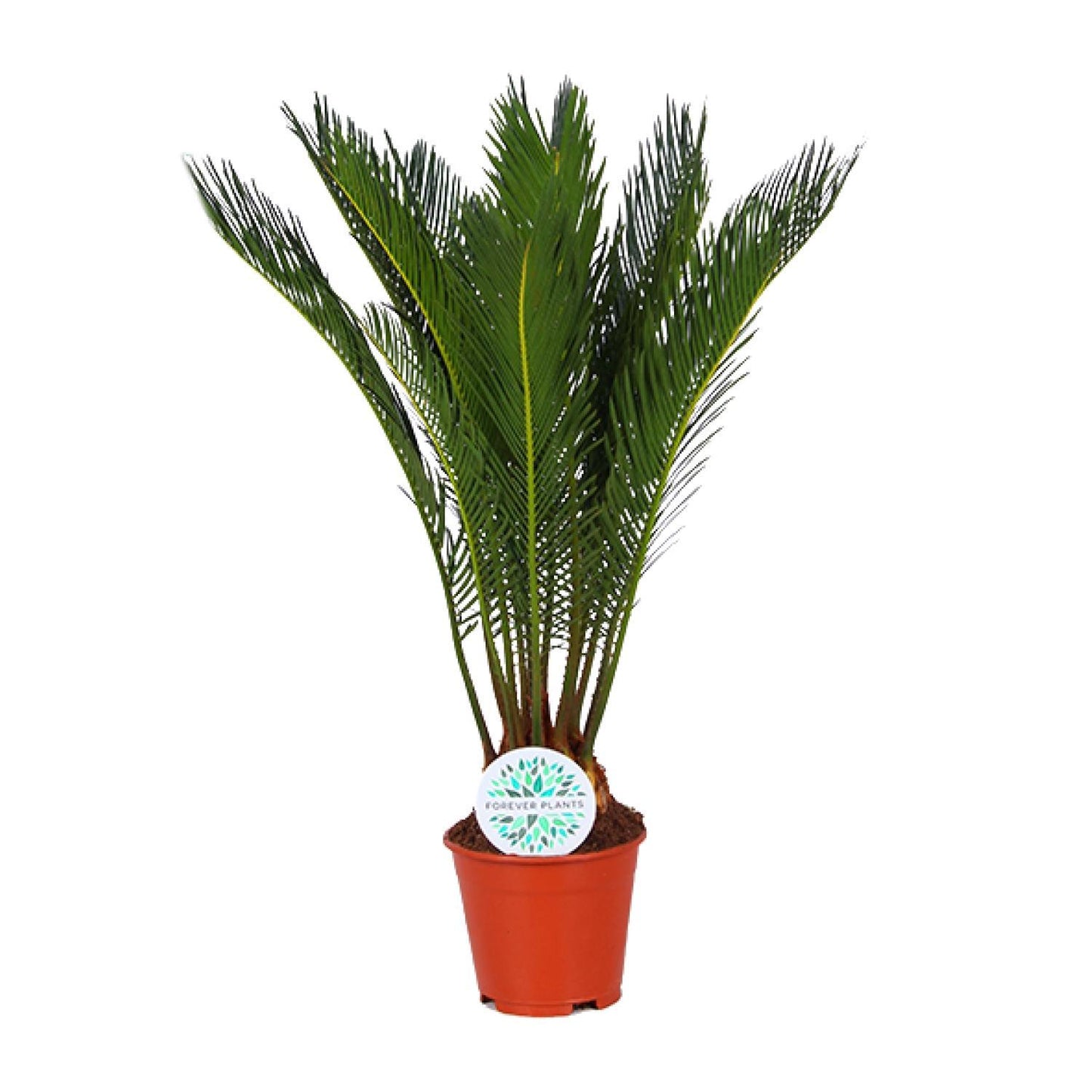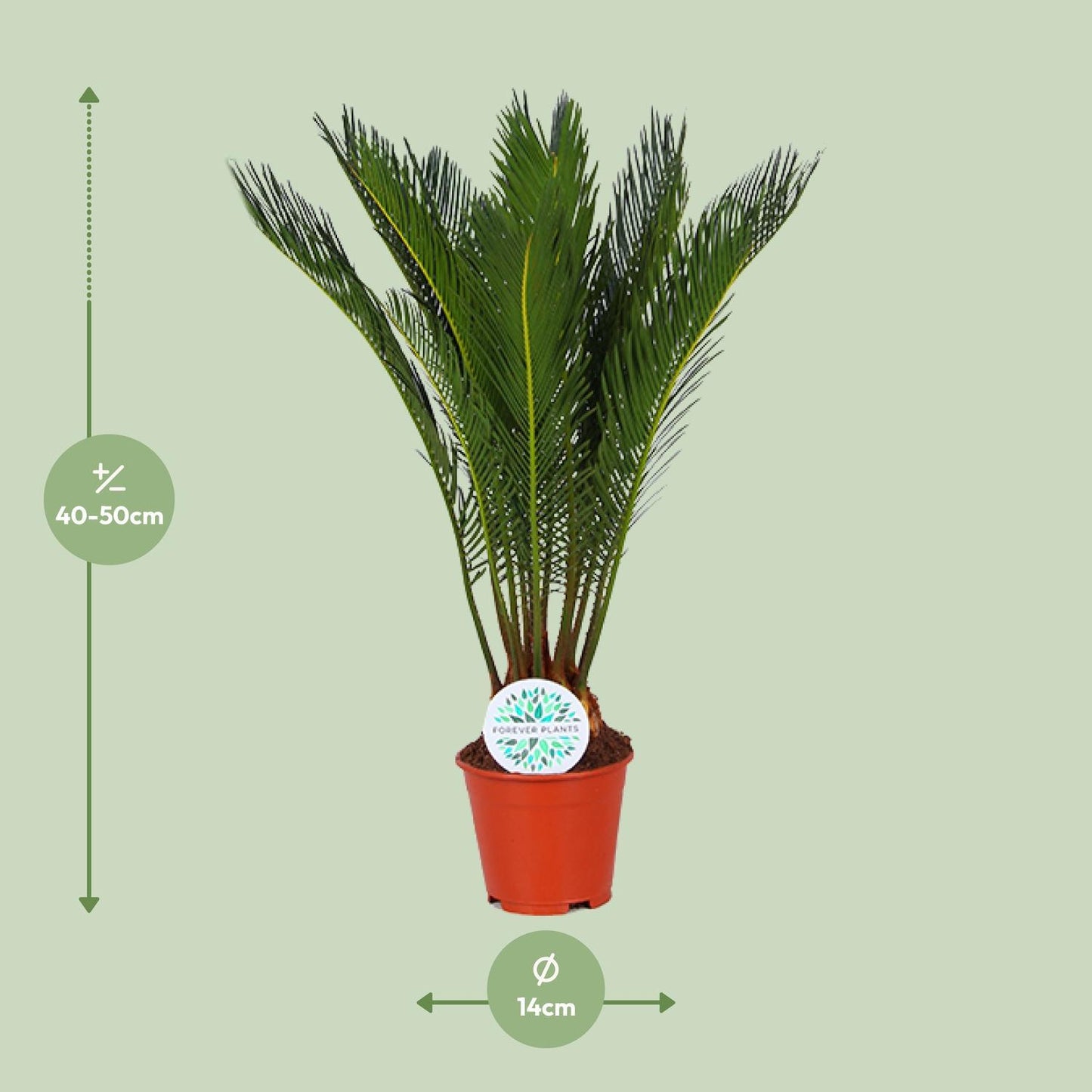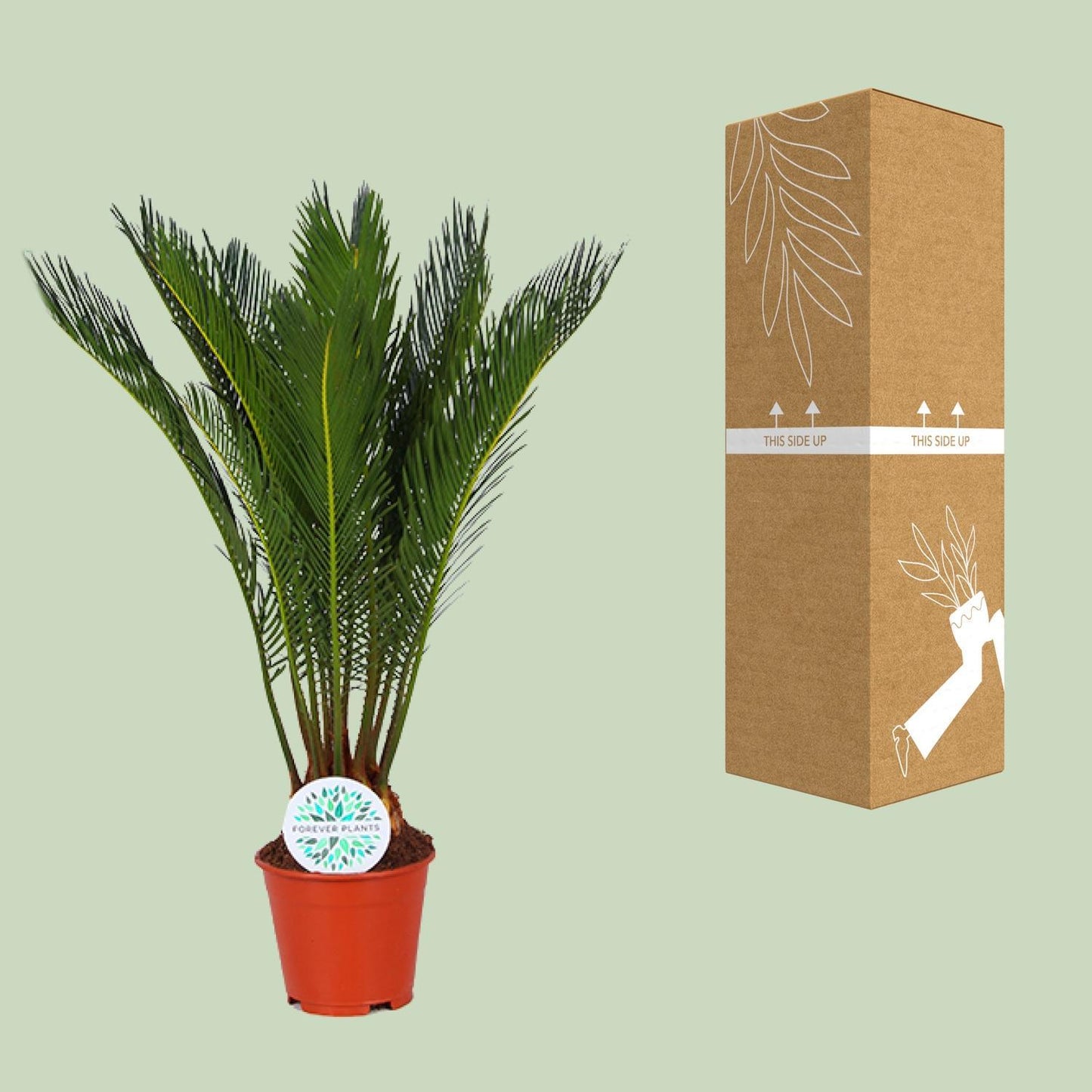1
/
of
4
Cycas Revoluta - Ø14cm - ↕50cm
Cycas Revoluta - Ø14cm - ↕50cm
Regular price
260,00 DKK
Regular price
Sale price
260,00 DKK
Unit price
/
per
Tax included.
Shipping calculated at checkout.
Couldn't load pickup availability
Cycas revoluta: An Elegant Decorative Plant
Cycas revoluta, also known as Fern Palm, originally originates from the beautiful landscapes of Japan. This beautiful indoor plant, with its lush green leaves, adds a touch of elegance to any room. Thanks to its compact and robust nature, it thrives exceptionally well indoors and creates a soothing atmosphere. The Fern Palm requires minimal maintenance, making it perfect for busy individuals. Due to its robustness, it can withstand different light conditions and is therefore suitable for any living room. Experience the beauty and tranquility that this plant brings to your indoor paradise.
To ensure healthy growth, place Cycas revoluta, also known as the Sago Palm, in a location with either partial shade or full sun. This versatile plant thrives on being watered every 8-10 days, maintaining a perfect balance between hydration and avoiding excess moisture. With minimal maintenance, this cycad will flourish and add a natural beauty to your home or office.
Did you know that:
Cycas revoluta, commonly known as Sago palm, is not actually a palm but a beautiful cycad? Its eye-catching pinnate leaves and ability to thrive indoors make it a popular decorative plant. However, it is important to note that although it resembles edible palm species, the Sago palm is not suitable for consumption. So admire this sweet and versatile plant as a beautiful addition to your home, but keep it for decoration only!
- Cycas revoluta, also known as Fern Palm, is a popular ornamental plant with a pot size of 14 cm.
- This evergreen plant can reach a height of about 50 cm, making it a perfect choice for interior decoration.
- Cycas revoluta thrives best in a place with partial shade, which makes it ideal for rooms with both indirect and direct sunlight.
- With its attractive feather-like leaves and unique texture, Cycas revoluta adds a touch of elegance to any room.
- Fun fact: Cycas revoluta is often called a "living fossil" because of its amazing resilience and ability to survive for centuries.
Cycas revoluta, also known as Fern Palm, originally originates from the beautiful landscapes of Japan. This beautiful indoor plant, with its lush green leaves, adds a touch of elegance to any room. Thanks to its compact and robust nature, it thrives exceptionally well indoors and creates a soothing atmosphere. The Fern Palm requires minimal maintenance, making it perfect for busy individuals. Due to its robustness, it can withstand different light conditions and is therefore suitable for any living room. Experience the beauty and tranquility that this plant brings to your indoor paradise.
To ensure healthy growth, place Cycas revoluta, also known as the Sago Palm, in a location with either partial shade or full sun. This versatile plant thrives on being watered every 8-10 days, maintaining a perfect balance between hydration and avoiding excess moisture. With minimal maintenance, this cycad will flourish and add a natural beauty to your home or office.
Did you know that:
Cycas revoluta, commonly known as Sago palm, is not actually a palm but a beautiful cycad? Its eye-catching pinnate leaves and ability to thrive indoors make it a popular decorative plant. However, it is important to note that although it resembles edible palm species, the Sago palm is not suitable for consumption. So admire this sweet and versatile plant as a beautiful addition to your home, but keep it for decoration only!
- Cycas revoluta, also known as Fern Palm, is a popular ornamental plant with a pot size of 14 cm.
- This evergreen plant can reach a height of about 50 cm, making it a perfect choice for interior decoration.
- Cycas revoluta thrives best in a place with partial shade, which makes it ideal for rooms with both indirect and direct sunlight.
- With its attractive feather-like leaves and unique texture, Cycas revoluta adds a touch of elegance to any room.
- Fun fact: Cycas revoluta is often called a "living fossil" because of its amazing resilience and ability to survive for centuries.
Share








